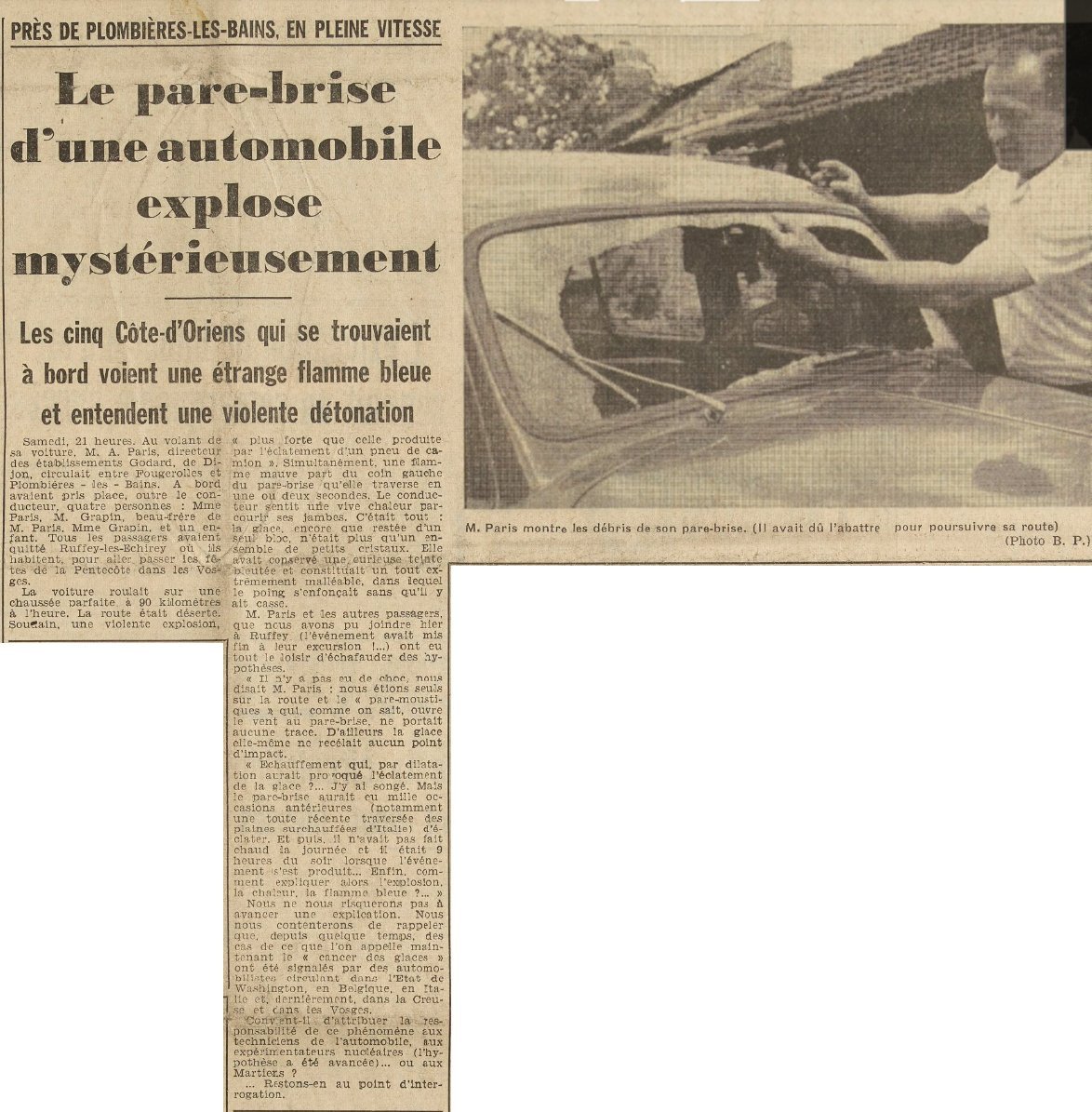The article below was published in the daily newspaper Le Bien Public, Dijon, France, page 1, on June 8, 1954.
See the case file.

|
Saturday, 9:00 p.m. At the wheel of his car, Mr. A. Paris, director of the Godard establishments in Dijon, was driving between Fougerolles and Plombières-les-Bains. Alongside the driver were four other people: Mrs. Paris, Mr. Grapin (Mr. Paris's brother-in-law), Mrs. Grapin, and a child. All passengers had left Ruffey-les-Echirey, where they live, to spend the Pentecost holidays in the Vosges.
The car was traveling at 90 kilometers per hour on a perfect road. The route was deserted. Suddenly, a violent explosion, louder than the blowout of a truck tire. Simultaneously, a mauve flame shot out from the left side of the windshield, passing through it in one or two seconds. The driver felt intense heat along his legs. That was it: the glass, though remaining in one piece, had turned into a mass of small crystals. It had taken on a curious bluish tint and was so malleable that a fist could sink into it without shattering it.
Mr. Paris and the other passengers—whom we reached yesterday in Ruffey (the incident had cut their trip short!)—had plenty of time to come up with theories.
"There was no impact," Mr. Paris told us. "We were alone on the road, and the 'bug shield'—as everyone knows, it deflects the wind from the windshield—showed no sign of damage. Moreover, the glass itself bore no point of impact.
"Could overheating and expansion have caused the glass to shatter?... I considered that. But the windshield had many previous opportunities—such as a recent drive across the sun-scorched plains of Italy—to break. And besides, it wasn't hot that day, and it was 9 p.m. when the incident happened... So how do we explain the explosion, the heat, the blue flame?..."
We won't venture a definitive explanation. We'll simply remind readers that similar incidents—what is now being called “glass cancer”—have been reported by motorists in the state of Washington, in Belgium, in Italy, and more recently in the Creuse and in the Vosges.
Should we blame this phenomenon on automotive engineers, nuclear experimenters (this theory has been floated...), or the Martians?
... Let's stick with the question mark for now.
Mr. Paris shows the remains of his windshield (he had to break it out to continue driving) (Photo B.P.)